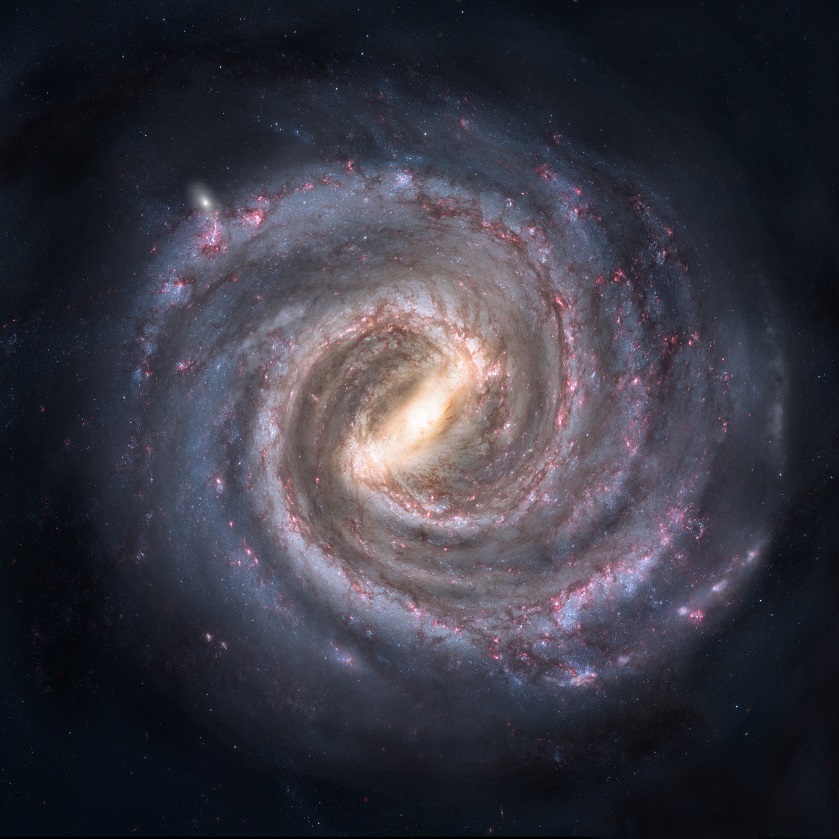Nov
5
Why a Spiral Galaxy?
Let’s “do” a little science-ing today, shall we?

I have had the book Improbable Planet by Hugh Ross in my bookcase for a few years but only now got around to reading it. Well, actually, I’m only part-way through it. But, I already found a nice snippet in the beginning chapters that I wanted to share here.
Ross is starting to build his case for all of the many concerns and hindrances to finding a locale for a planet that will support a diverse population of advanced life. He begins by talking about the “neighborhood” — i.e., the location and characteristics of an appropriate galaxy and, thus, how our Milky Way Galaxy measures up. One of the necessary factors is that the galaxy in question be of the spiral variety.
“For advanced life to be possible, a several-billion-year history of simple life must precede it (see chs. 9-14). Such a long history of life requires a spiral galaxy with stable, symmetrical spiral arms. To sustain such a spiral structure, a spiral galaxy must gravitationally consume gas-rich dwarf galaxies at a frequent and regular rate. The reason is that a certain level of ongoing star formation is needed to maintain the spiral structure. Without the additional gas provided by the accreted dwarf galaxies, the appropriate level of star formation cannot continue for a long enough time.”
A couple pages later, Ross includes a helpful sidebar that further explores why only a spiral galaxy will do….
— — —
Only a spiral galaxy can support life; elliptical galaxies and irregular galaxies cannot.
Elliptical galaxies (which are either ellipsoidal or spheroidal in shape) compare with a dilapidated neighborhood. They contain mostly ancient stars and limited resources (as in gas). Because star formation ceases relatively early in elliptical galaxies, they produce an insufficient abundance and diversity of the heavy elements life needs. Furthermore, stars in elliptical galaxies are so crowded together that long-term, stable planetary orbits are impossible. Stars in the outer fringes of elliptical galaxies may not suffer crowding from adjacent stars, but they will lack the abundance and diversity of heavy elements needed for such stars to generate life-supporting rocky planets.

Irregular galaxies lack distinct regular shapes. They are chaotic in appearance without either spiral arms or a nuclear bulge. Large irregular galaxies possess active nuclei, which spew deadly radiation. Small irregular galaxies lack the quantities of heavy elements that life requires. All irregular galaxies manifest chaotic stellar orbits, which can disrupt planetary orbits or bring bright young ultraviolet-emitting stars into the vicinity of a life-sustaining planet.
Only in a spiral galaxy is a long history of life possible. A spiral galaxy of the just-right size and the just-right structure can yield adequate heavy elements for life as well as a possible location where a planetary system can reside for billions of years without being exposed to deadly radiation and without gravitational disruptions from adjacent stars and molecular clouds.
— — —
That’s just the tip of the iceberg, so to speak, of all the conditions and characteristics necessary for a planet to be a long-term host for advanced life. Earth is the only planet to meet them all. Nothing else comes close and, imo, it’s not looking hopeful.















